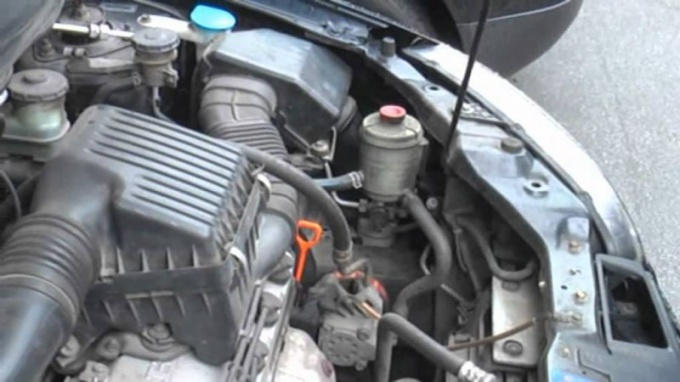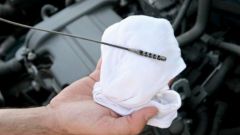Check the level of fluid in the CVT should be performed when the oil temperature is 50-80°C. to warm up the engine, you have to drive 10-25 miles depending on the time of year. The lower the temperature, the longer heating is required for the oil to reach the above temperature range. Measurement of the oil level with a cold engine can cause measurement error, which resulted in the increased oil level will be above or below its nominal value.
Before you scan you must set the vehicle on a horizontal surface. The venue of the measurement can serve as a garage with a flat floor or open paved area. The engine during the test must be run at idle.
Further the inspector presses the brake pedal, and sequentially switches the selector to all of the provisions, stopping at each position for 10 seconds. Then the selector returns to its initial position after the brake pedal is released.
After switching the selector must exit the cab and open the hood the engine compartment. To measure oil level is the dipstick located in the filler neck of the CVT. To remove the probe from the neck, you need to perform the unlocking of the locking mechanism by pressing the switch located at the head of the probe.
To protect your hands when removing the latch it is necessary to use gloves or a rag. Also need a dry cloth to wipe the surface of the probe. During the inspection the filler neck of the variator should not be exposed to moisture or dust.
The dried probe must be fully placed in the neck, then remove and check the fluid level. Oil level fluid level should be between the two notches, showing the minimum and maximum oil level. After the end of the test probe falls back into the neck, after which it switches the latch to the closed position.
If the oil level in the variator below the minimum mark, required to add an identical fluid grade specified in the operational documentation on the car. After topping you want to re-check fluid level. If the rate of decline of the oil level higher than its natural dynamics to flow, you need to check the tightness of the system.
If the oil level exceeds the desired value, the surplus liquid is pumped with a syringe on the end of which is secured the rubber transition tube.
Verification
Before you scan you must set the vehicle on a horizontal surface. The venue of the measurement can serve as a garage with a flat floor or open paved area. The engine during the test must be run at idle.
Further the inspector presses the brake pedal, and sequentially switches the selector to all of the provisions, stopping at each position for 10 seconds. Then the selector returns to its initial position after the brake pedal is released.
After switching the selector must exit the cab and open the hood the engine compartment. To measure oil level is the dipstick located in the filler neck of the CVT. To remove the probe from the neck, you need to perform the unlocking of the locking mechanism by pressing the switch located at the head of the probe.
To protect your hands when removing the latch it is necessary to use gloves or a rag. Also need a dry cloth to wipe the surface of the probe. During the inspection the filler neck of the variator should not be exposed to moisture or dust.
The dried probe must be fully placed in the neck, then remove and check the fluid level. Oil level fluid level should be between the two notches, showing the minimum and maximum oil level. After the end of the test probe falls back into the neck, after which it switches the latch to the closed position.
What to do if the oil level goes beyond the required values
If the oil level in the variator below the minimum mark, required to add an identical fluid grade specified in the operational documentation on the car. After topping you want to re-check fluid level. If the rate of decline of the oil level higher than its natural dynamics to flow, you need to check the tightness of the system.
If the oil level exceeds the desired value, the surplus liquid is pumped with a syringe on the end of which is secured the rubber transition tube.



